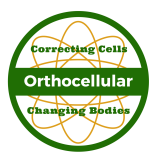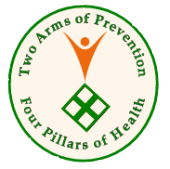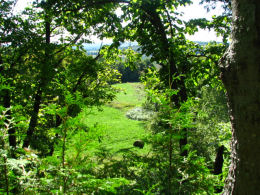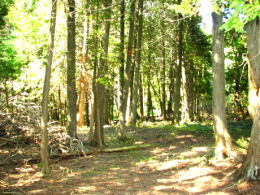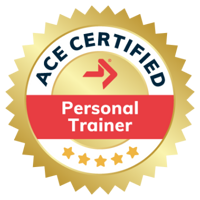Orthocellular Nutrition and Exercise Inc.
Stress Reduction Techniques
Here, we feature stress reduction techniques that health care practitioners use on a regular basis to jettison prolonged stress in their clients. Two of these techniques are described below. Incorporate these sound practices into your lifestyle until they become second nature. If you do, you will have taken a big step towards maintaining a stress-free life.
Developing Relaxing Daily Activities
There are a number of specific techniques that bring about a state of relaxation including:
- meditation,
- deep breathing,
- music therapy,
- gratitude practice,
- rebounding,
- yoga,
- chi gong,
- exercise followed by stretching,
- progressive muscular relaxation,
- deep muscular relaxation,
- quieting reflex, and
- many others.
Many of the protocols must be learned and practiced regularly. The ones you choose to practice should become as much a part of your life as brushing your teeth, and not be restricted to when you are feeling or expect to feel stressed.
In addition, learning these stress reduction techniques takes time and you should not expect too much too soon. It can take a while before the benefits kick in, but the results are worth waiting for.
Follow the procedures below and you will learn to achieve a state of deep relaxation.
But first, a quote to ponder and a note about gratitude
"Who you are, what you think, feel and do, what you love - is the sum of what you focus on." ... by Winifred Gallagher from her book Rapt.
We tend to believe that our happiness depends on our circumstances such as where we reside, what position we hold, our social circles, etc. But a lot of recent research has contradicted this idea. Instead, our brains build meaning and create a worldview based on what we pay attention to. This is why gratitude practices are so effective. It also explains why some people can continue to be happy despite extremely challenging circumstances in their lives.
Stress Reduction Techniques #1: Relaxation Music
The first of our stress reduction techniques is relaxation music. Music therapy and certain types of music dramatically reduce stress. Listening to music is one of the most common forms of relaxation.
However, each person gives his or her own meaning to music. It is important that when you want to listen to music for the purpose of relaxation, you select music you find peaceful and soothing.
Furthermore, music and sounds with a slow, rhythmic beat induces slow brainwave patterns, called the Alpha and Theta waves, which are associated with calmness. So, soft music and calmness is beneficial. Alpha brainwaves cycle at a frequency of 7-13 Hertz. This is the brainwave patter of activity we have prior to sleeping. On the other hand, Theta brainwave activity, in the range of 4-6 hertz, is seen in deep relaxation and meditative states, as well as in daydreaming.
Benefits of Music Therapy: Music inducing Alpha and Theta brainwave activity can lead to:
A decrease in blood pressure and heart rate
A reduction in muscle tension
A decrease in cortisol
An improved immune function
The Wrong Kind of Music: Avoid music that stresses. Certain music has been shown to kill plants and in humans, dramatically suppress the immune system, which is counterproductive. Certain music has also been shown to make the body very acidic. Stress levels in the body are one of the leading causes of the body becoming acidic, which means stress is one of the leading causes of virtually every disease.
Relaxation Music Procedure: Selecting the type of music and sound to achieve a therapeutic effect or a state of calmness is very much an individual choice. What works for one person may not work for another.
Therefore, listen to music that promotes the health and vitality in plants. This also seems to encourage the same in humans. Baroque classical is one form of music that accomplishes this. Others are slow jazz and regular classical.
Follow these steps:
- Put on peaceful and soothing music, ½ to 1 hour before bedtime. So, if your bedtime is 11:00 PM, put the music on at 10:15 PM. Listen to a de-stressing CD.
- Settle back in a comfortable position such as relaxing on the couch.
- Close your eyes.
- Mentally scan your body and note any areas of tension, pain, and relaxation.
- Be aware of your mood, as you focus your attention on the music.
- Each time an unrelated thought enters your head, note it and then discard it, remembering your goal of focusing on the music and relaxing. To help you with this you can repeat an affirmation, such as "relax" or "music relaxes me."
- When the music ends, allow your mind to scan your body again and become aware of how it feels. Does your body feel different than before you started listening to the music? Is there any difference in your mood?
As an example, listen to the following sound clip from The Best of Solitudes by Dan Gibson. Here, sounds from nature and music work in synergy to relax the mind. Try to keep the volume low!
Stress Reduction Techniques #2: The Quieting Reflex
The second stress reduction technique is the Quieting Reflex (QR). When you feel stressed during the day, sit back for a few minutes and practice a quick relaxation technique. Try the QR. It takes only a couple of minutes and with practice achieves a body state opposite to activation of the alarm reaction.
Benefits of the the Quieting Reflex: With practice over several months, QR becomes automatic. It provides a pause for you to decide whether or not to stay stressed, tense, and annoyed, or to shift into a less irritated and more relaxed state.
Follow these steps:
- Close your eyes and pinpoint in your mind what is annoying or stressing you.
- Say to yourself, “Alert mind, calm body. I’m not going to let this get to me.”
- Smile to yourself.
- Breathe in slowly through your nose for five seconds while imagining that the air is coming in through holes in your feet. Feel the sensation of warmth and heaviness flowing throughout your body, starting at your feet and ending at your head.
- Hold your breathe for five seconds.
- Breathe out slowly through your mouth with lips pursed for five seconds. Visualize your breath passing through your body from your head and out through the holes in your feet. Feel the warmth and heaviness flow through your body. Let your muscles relax, and let your jaw, tongue, and shoulders go limp.
- Wait for 5 seconds.
- Repeat steps 4, 5, 6, and 7 above, five more times.
- Now open your eyes.
- Resume your normal activity.
Stress Reduction in the Preventative Health Programs
In addition, a number of stress reduction techniques are weaved into the beginning modules of the following programs:
Permanent Weight Loss Program
Disease Prevention Program Stream 1
Disease Prevention Program Stream 2
But you need to get the right tools before you can start. If you haven't already visited the Stress Reduction Tools page, head over there now to find out what's needed.
Recommend this page on Facebook ...
Checkpoint
Return to the top of this page: Stress Reduction Techniques
Go back to the place: Stress Reduction Place
Head back home: Home
Caring is sharing ....
Four Pillars
of
Health
Pillar #1
Nutrition Protocols
Visit the Nutritionist's Kitchen
Pillar #2
Exercise Routines
Go to the Exercise Room
Pillar #3
Stress Reduction
Techniques
Head over to the Stress Reduction Place
Pillar #4
Detoxification
Methods
Check out the Detox Centre
Preventative
Health Contract Services
Business
and
Industry
Educational
Institutions
Health
Agencies
Preventative
Health Business Opportunities
Four Pillar
Licences
Two Pillar
Licences
Image Galleries
Click one of the thumbnails below to view a series of photos taken on the Bruce Trail and Georgian Bay.
E-publications
Our E-books
Workshops
Free Workshops
Spring 2026
Go to: Free Workshops
Blog
The Preventative Way
with
Mr. Prevention
On The Preventative Way page we reveal a number of scientific facts related to how we function at the cellular level to keep our bodies healthy. Visit this page often as new facts, quotes, videos, tips, and traps will be added from time to time.
Go to: The Preventative Way
Connect with Us
on Facebook
Visit the American Council on Exercise
American Council on Exercise offers four certifications for aspiring fitness professionals including their Certified Personal Trainer (ACE-CPT) designation. Click on the ACE logo to find out all about their programs and certifications..
The Leap Manifesto
A call for a Canada based on caring for the Earth and one another is the message on this organization's site.
Click on the above logo to read the manifesto and then sign it. Orthocellular supports this initiative because it is about positive change for the people and the environment that we all share. The changes need to start now!

